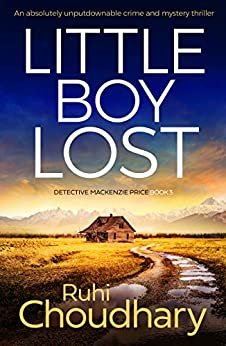Little Boy Lost: An absolutely unputdownable crime and mystery thriller (Detective Mackenzie Price Book 3) (English Edition)


PREGUNTAS FRECUENTES
«How the Other Half Lives» by Jacob Riis: A Powerful Social Commentary of the 19th Century
Published in 1890, «How the Other Half Lives» by Jacob Riis is an extraordinary book that remains influential in the fields of journalism, social reform, and photography. The book’s subtitle, «Studies Among the Tenements of New York,» succinctly conveys its focus on the life and struggles of the urban poor in New York City. Using a combination of written narrative and photographs, Riis unveils the harsh realities of poverty, discrimination, and injustice that the lower classes faced in the late 19th century.
Riis himself was no stranger to hard work and poverty. Born in Denmark in 1849, he emigrated to the United States in 1870 and worked intently as a reporter for the New York Tribune. Riis’s firsthand experiences living in the tenements of New York City and his reporting on the harsh living conditions that he observed made him a fearless advocate for reform. His powerful writing and photography laid bare the conditions of the impoverished and gave voice to the voiceless.
The book is divided into chapters that are each dedicated to a different aspect of the living conditions in New York City’s tenements. In the first chapter, Riis describes in vivid detail the overcrowded and unsanitary living conditions in the tenements. He goes on to describe the many challenges that the residents face in their daily lives, including joblessness, hunger, and disease. He also shares examples of how families try to overcome these challenges, such as pooling their resources to rent a single room.
One of the most powerful aspects of «How the Other Half Lives» is Riis’s use of photographs to complement his written descriptions. His photographs of the tenements, which he took himself using flash powder at great personal risk, are a powerful and controversial aspect of the book. Riis’s use of photography, which was still a relatively new and unfamiliar medium at the time, was revolutionary. His photos are unflinching in their portrayal of the squalor and suffering of the tenants.
In addition to exposing the living conditions in the tenements, Riis also reports on the systemic problems that contributed to these conditions. For example, in one chapter, he examines the political corruption that ran rampant in New York City during the late 19th century. He details how politicians enriched themselves through graft and kickbacks while ignoring the needs of the poor. Such insights into the political system of the time helped spur reforms that changed the city’s political landscape.
As a powerful social commentary, «How the Other Half Lives» was instrumental in bringing attention to the plight of the urban poor and in pushing for reforms that improved their living conditions. The book was widely read and helped spark a national conversation about poverty, social justice, and income inequality that continues to this day. Riis’s legacy as a journalist, photographer, and reformer continues to inspire new generations to take action to create a fairer and more just society.
In conclusion, «How the Other Half Lives» is a must-read for anyone interested in understanding the social and political issues facing America in the late 19th century. Jacob Riis’s eloquent writing, his powerful photographs, and his fearless reporting on the living conditions of the urban poor helped to change the way America thought about poverty and inequality. Over a century later, the lessons of «How the Other Half Lives» remain relevant and vital to any discussion of social justice and human rights.
1. ¿De qué trata Little Boy Lost?
R: Es una novela de misterio y crimen protagonizada por la Detective Mackenzie Price.
2. ¿Quién es el autor de Little Boy Lost?
R: Es la autora J.S. Monroe.
3. ¿Es necesario leer los libros anteriores de la serie Detective Mackenzie Price antes de leer Little Boy Lost?
R: No, aunque es recomendable para entender mejor la trama y los personajes.
4. ¿Dónde tiene lugar la historia en Little Boy Lost?
R: La historia tiene lugar en Cornwall, Inglaterra.
5. ¿Quién es el niño perdido en la novela?
R: Es un niño de 7 años que desaparece misteriosamente en una playa.
6. ¿Qué papel juega la detective Mackenzie Price en la investigación por la desaparición del niño?
R: Ella es la principal encargada de la investigación.
7. ¿Qué obstáculos debe enfrentar Mackenzie Price durante la investigación?
R: Debe lidiar con la interferencia de los medios y la resistencia de la comunidad.
8. ¿Hay algún giro sorprendente en la trama de Little Boy Lost?
R: Sí, hay varios giros sorprendentes en la trama.
9. ¿Qué críticas ha recibido Little Boy Lost?
R: Ha sido elogiado por su intriga, tensión y giros sorprendentes.
10. ¿Recomendarías Little Boy Lost a los amantes de los thrillers de misterio?
R: Sí, definitivamente.






